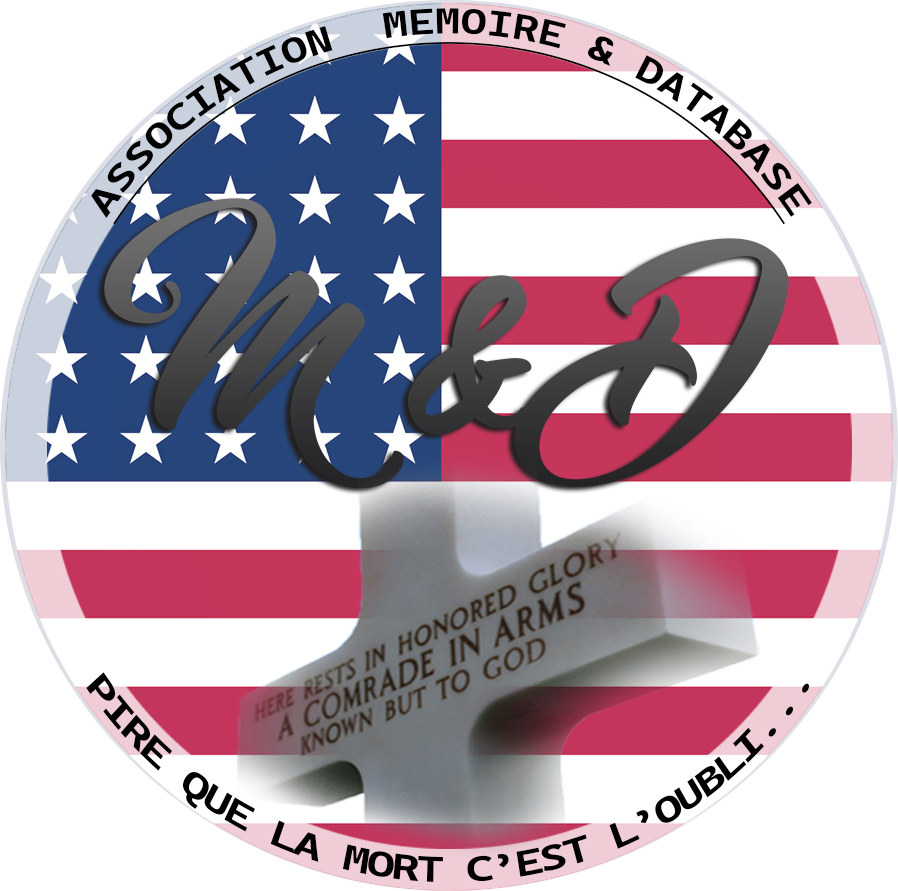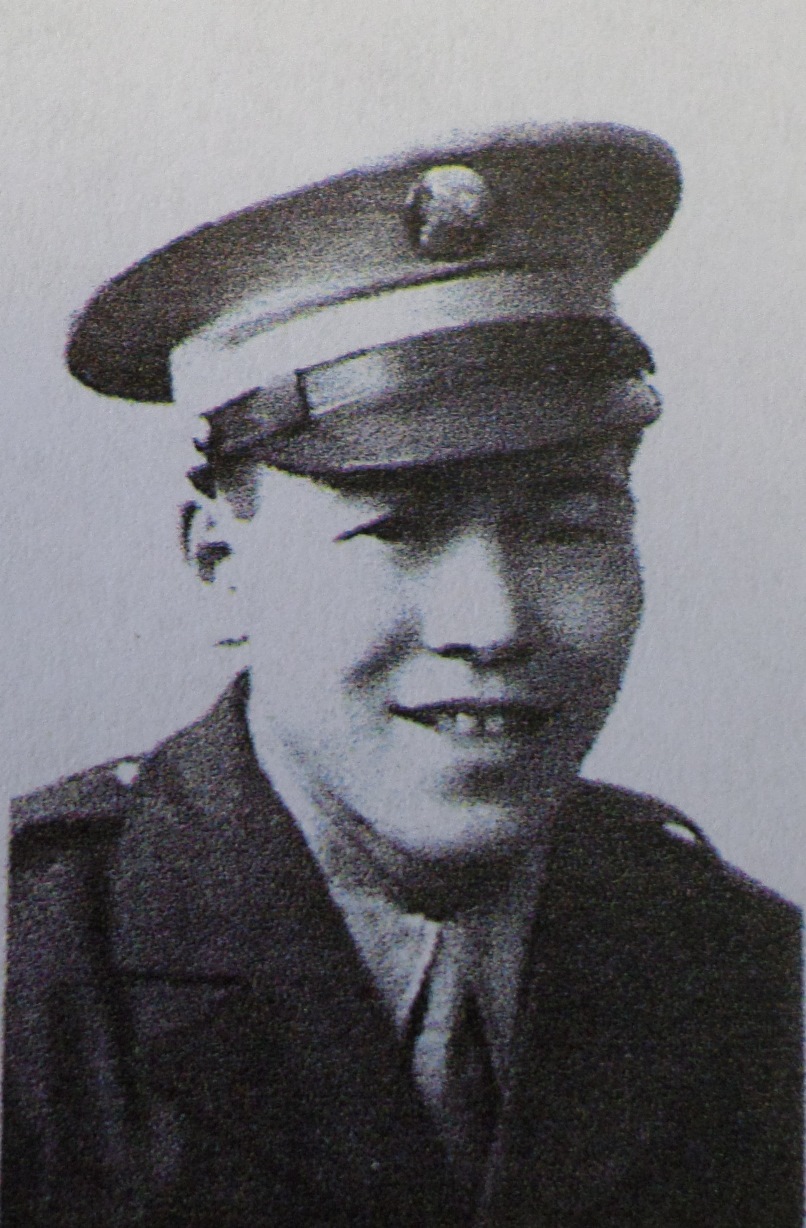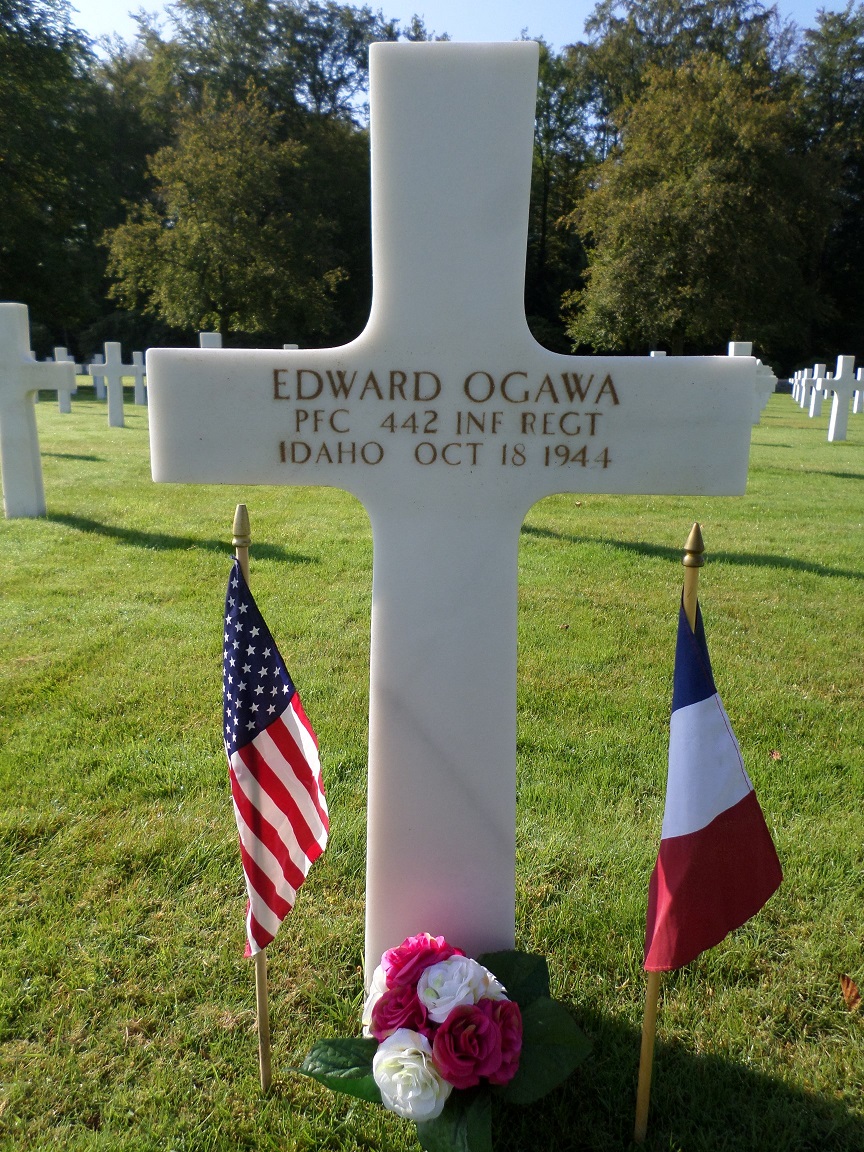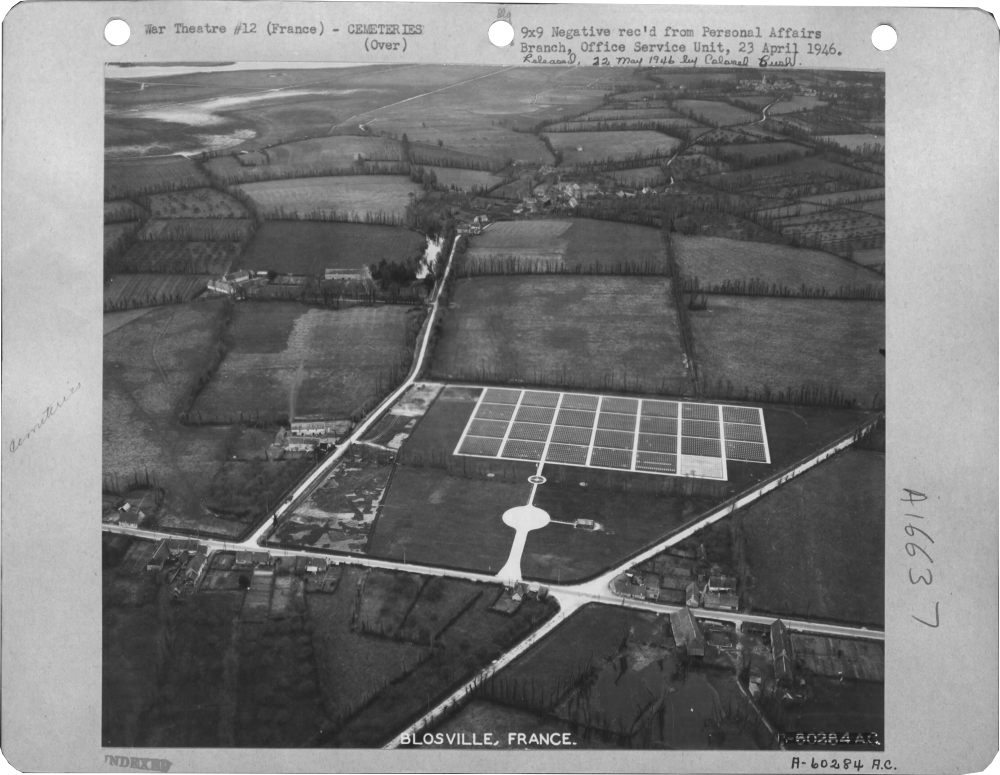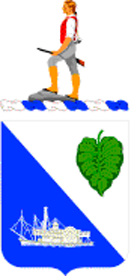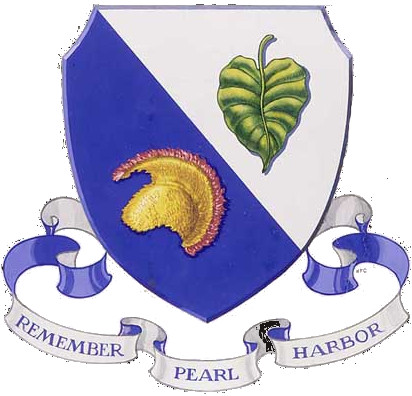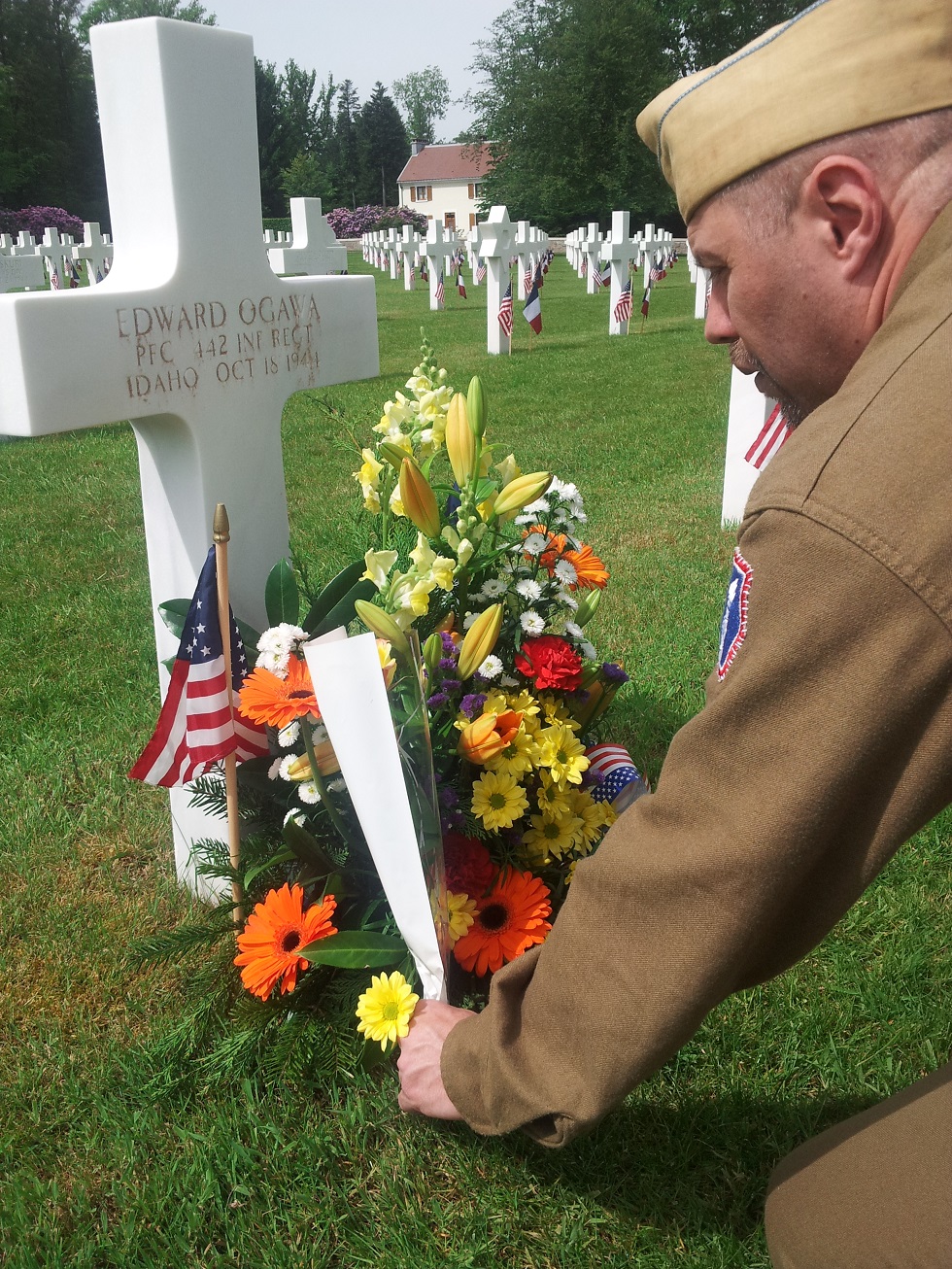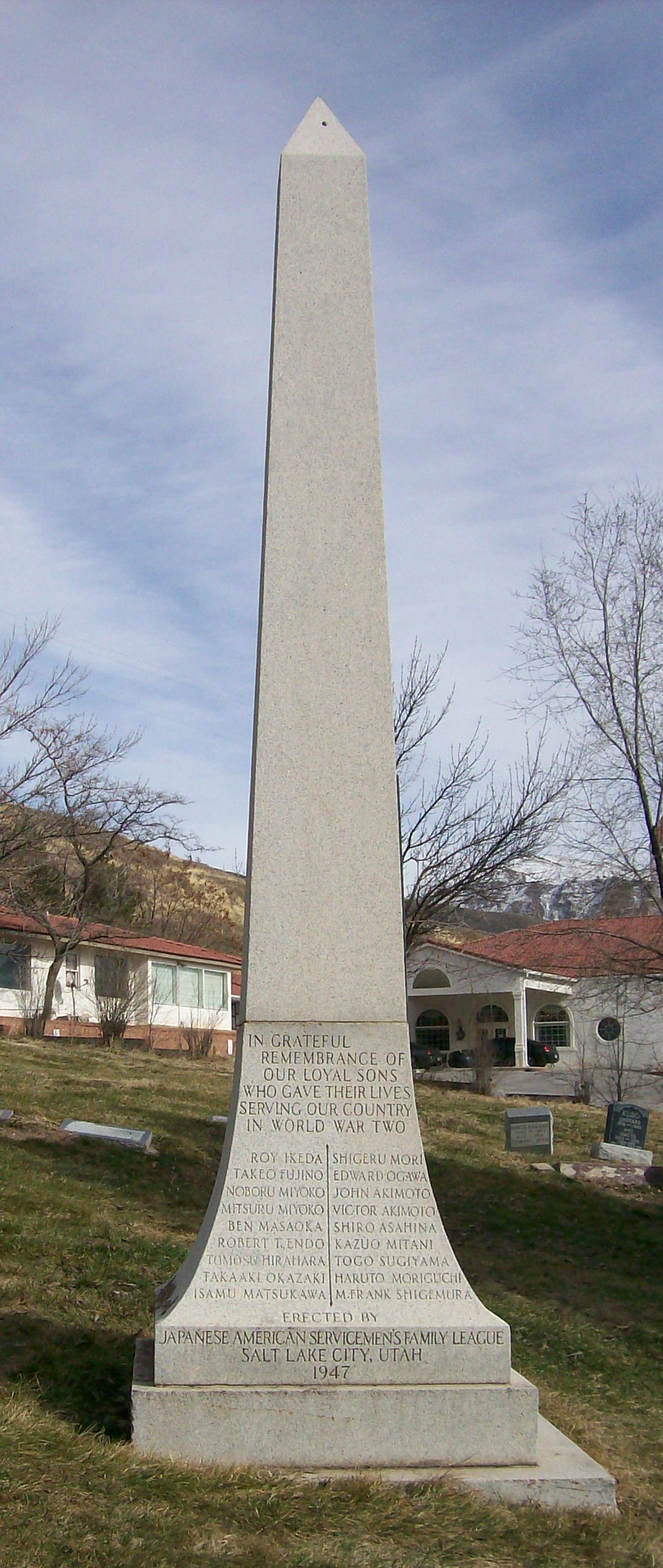|
Edward OGAWA
| |||||||
|---|---|---|---|---|---|---|---|
|
Source : Andy
| |||||||
| NUMBER OF SERVICE | 39913809 | ||||||
| AGE | 27 yo | ||||||
| DATE OF BIRTH | 1917 IDAHO | ||||||
| ETAT | Country STATE | ||||||
| FAMILY | Single | ||||||
| RANK | Private First Class | ||||||
| FONCTION | Infantry | ||||||
| JOB BEFORE ENLISTEMENT | Hotel and restaurant managers |  | |||||
| DATE of ENLISTEMENT | 6 May 1943 Salt Lake City UTAH | ||||||
| COMPANY | Company C | ||||||
| BATTALION | 100th Battalion | ||||||
| REGIMENT |
442nd Infantry Regiment « Go for broke » | ||||||
| DIVISION | 36th Infantry Division | ||||||
| DATE OF DEATH | 18 October 1944 |
Source : Andy | |||||
| STATUS | KIA | ||||||
| PLACE OF DEATH | Bruyères | ||||||
| CEMETERY TEMPORARY |
CEMTERY TEMPORARY of -- N°--
| ||||||
| CEMETERY | NORMANDY AMERICAN CEMETERY of Colleville | ||||||
| GRAVE |
| ||||||
| DECORATION |
| ||||||
| |||||||
| STORY | |||||||
|
Source : Chipot
|
He was related to Mr. Thomas Ogawa who resided in Salt Lake City, Utah. Edward served as a Private First Class, Company C, 100th Infantry (attached), 442nd Infantry Regiment, U.S. Army during World War II. He resided in Bannock County, Idaho prior to the war. He enlisted in the Army on May 6, 1943 in Salt Lake City, Utah. He was noted, at the time of his enlistment, as being employed as a Hotel and/or restaurant manager and also as Single, without dependents. On October 14, 1944 the 442nd Infantry, along with the 100th Infantry Battalion (attached), were assigned to liberate Bruyeres, France which was considered a gateway to entering Germany during the war. They were tasked to attack, what was called at that time, Hill's A, B, C, and D. Each hill was heavily guarded, as each hill was key in order to take and secure Bruyeres. Hitler had ordered the German frontline to fight at all costs as this was the last barrier between the Allied forces and Germany. Edward was "Killed In Action" during the fighting in and around Bruyeres, France during the war and was awarded the "Silver Star" and the Purple Heart. | ||||||
Silver Star Citation:( Submitted by: ShaneO ) The President of the United States takes pride in presenting the Silver Star Medal (Posthumously) to Edward Ogawa (39913809), Private First Class, U.S. Army, for conspicuous gallantry and intrepidity in action against the enemy while serving with Company C, 100th Infantry Battalion, 442nd Regimental Combat Team, attached to the 36th Infantry Division, on 18 October 1944, in the vicinity of Bruyeres, France. The platoon of which Private First Class Ogawa was a member was assigned the task of occupying an isolated farm house in order to secure the battalion's right flank while it advanced against an enemy-held hill. This farmhouse was situated on open flat terrain covered by enemy fire. As his platoon dashed across the open field to the farm house, a hundred yards away, Private First Class Ogawa ran along the right flank of the group and screened their movement by firing his BAR at four enemy-held machine gun positions which he had previously spotted. By thus pinning down the enemy machine gunners, he enabled his platoon to reach their objective with only one casualty. After reaching the farm house he placed himself at a strategic but exposed position and returned fire on the enemy positions. It was while he was so engaged that he was mortally wounded by a sniper. By his heroic conduct Private First Class Ogawa contributed materially to the success of his battalion's mission.Headquarters, 7th Army, General Orders No. 117 (November 30, 1944)Home Town: Ashton, Idaho. | 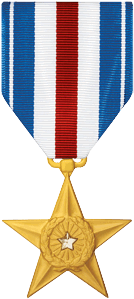 | ||||||
|
This memorial is erected in the Salt Lake City Cemetery
Source : BBW
|
After the attack on Pearl Harbor, citizens of Japanese descent living in the United States were looked upon with extreme suspicion. Eventually, 120,000 people along the West Coast were forcibly interned while a larger number (158,000) living in Hawaii were not, except for about 2,000. This was the result of the closely knit multi-ethnic community in Hawaii actively advocating for fair treatment of its fellow citizens. The 100th Infantry Battalion comprised of more than 1,400 Nisei from the Hawaii National Guard in June 1942 left Hawaii to train at Camps McCoy and Shelby before going into combat in September 1943 as part of the 34th ID. The 100th Infantry Battalion became the Army's experiment to see if Americans of Japanese descent could be trusted in combat. The War Department ordered General Mark Clark to report on the 100th's performance after it first entered combat, and General Clark responded, "... I sent a cable to Eisenhower on October 8, stating that they (the 100th) had seized their objective and that they were quick to react whenever the enemy offered opposition". In five months of combat, the One Puka Puka that had landed with 1,300 men at Salerno suffered so many casualties and were down to 521 men after the battle at Cassino in February, 1944, leading war correspondents to refer to them as the Purple Heart Battalion. If the 100th Infantry Battalion had messed up anywhere along its journey from training and into combat, that would have ended the Army’s experiment for using them as front-line soldiers. But the men of 100th Infantry Battalion performed brilliantly, removing all doubts of their loyalty and paving the way for the future deployment of the 442nd RCT in June 1944. Because of the magnificent training record of the 100th Infantry Battalion as well as the dedication and willingness by the Varsity Victory Volunteers (VVV), a group of ROTC students from the University of Hawaii to serve their country, as well as ongoing lobbying efforts, the War Department announced in January 1943 that it was forming a Japanese American combat team and called for 1 500 volunteers from Hawaii. An overwhelming 10 000 men signed up, including many men from the VVV. On the mainland, the War Department had set a goal of 3 000 recruits, but the reception was understandably much less enthusiastic. When the 442nd RCT was activated. Hawaii-born men made up about two-thirds of the regiment with the remaining one-third from the mainland, many of whom came from the internment camps. When the 442nd RCT entered combat in June 1944, the 100th Infantry Battalion became the 1st battalion but retained its designation because of its unparalleled combat record. There are nine soldiers of Japanese descent from the mainland as well as two white officers interred or memorialized at Epinal. One is Pfc Edward Ogawa, the recipient of the Silver Star for valor. | ||||||
| SOURCE INFORMATION & SOURCE PHOTO | Abmc.gov - findagrave.com - Aad.archives.gov - Isami YOSHIHARA |
|---|---|
| PROGRAMMER | Henri, Garrett, Clive, Frédéric & Renaud |


